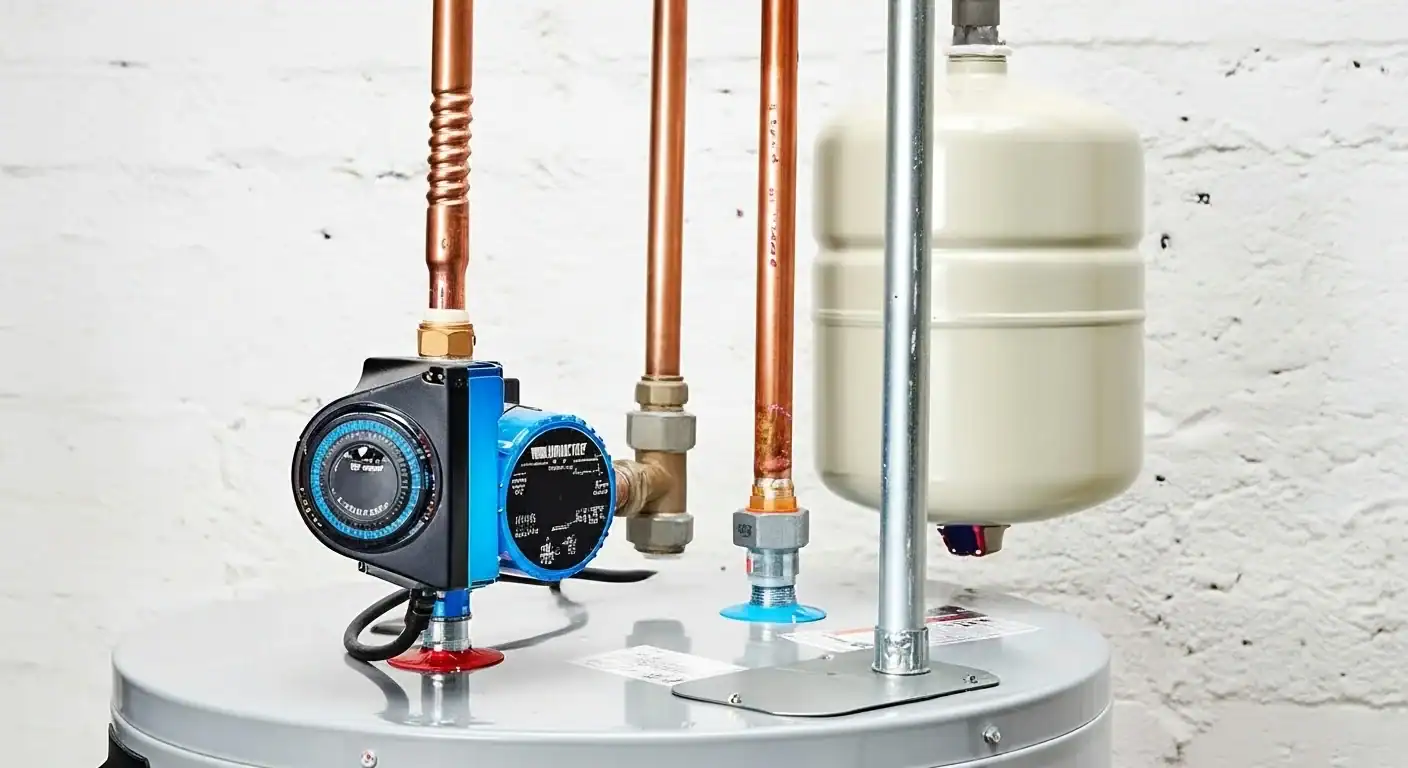Few household frustrations compare to turning on the tap and waiting—sometimes a whole minute or more—before hot water finally appears. It not only tests your patience but also wastes litres of good drinking water every day. In Adelaide and throughout Australia, this issue is common in homes with long plumbing runs, larger layouts, or older systems. Luckily, there’s a solution that addresses both the delay and waste: the hot water recirculation pump.
Why Does It Take So Long for Hot Water?
Distance from the Heater
The simplest reason is plumbing length. If your bathroom or kitchen is far from the hot water system, the water sitting in the pipes cools down when not in use. Every time you open a hot tap, that cooled water has to flush out before heated water from the tank or system arrives.
Pipe Material and Size
Thicker or wider pipes hold more water, which takes longer to clear. Materials like copper lose heat faster than modern insulated piping, meaning cooled water lingers in the line.
Tank Recovery and Flow
For storage-based systems, if the water inside the tank is reheating after heavy use, it may take longer for hot water to reach taps. With continuous flow (instantaneous) units, slow ignition or lower flow rates can also delay delivery.
System Age and Efficiency
Older systems lose heat more rapidly and may cycle less efficiently. That inefficiency translates directly into longer wait times.
What Is a Hot Water Recirculation Pump?
A hot water recirculation pump is a small device added to your plumbing that keeps hot water moving through the pipes. Instead of letting water sit and cool, the pump circulates it back toward the heater when taps are not in use. As a result, hot water is always close to your taps, cutting down or even eliminating the wait.
Some systems install a dedicated return line, while retrofit models use existing plumbing with a special valve. Either way, the principle is the same: no more cold flush before your shower or sink use.
How a Recirculation Pump Works
- Circulation Loop – The pump pushes unused hot water sitting in the pipes back to the heater, either through a dedicated return line or via the cold line with a bypass valve.
- Temperature Sensor or Timer – Modern pumps activate when water temperature drops below a set point, or they run on a schedule, ensuring efficiency.
- Instant Access – When you open a tap, heated water is already in the line, drastically reducing wait times.
Benefits of Installing a Recirculation Pump
Instant Comfort
The most obvious perk: hot water at your tap almost instantly. No more waiting in winter mornings or wasting time before washing dishes.
Water Conservation
Each second you wait for hot water, litres of clean water flow down the drain. Over a year, households can waste thousands of litres this way. Recirculation pumps save most of that waste.
Energy Efficiency (When Used Smartly)
Though pumps use some electricity, modern models are efficient. With timers, motion sensors, or temperature triggers, you only circulate when necessary, cutting both water and energy bills.
Extended System Life
By keeping water moving and reducing sudden high demands, pumps can reduce wear on your plumbing and improve performance consistency.
Types of Recirculation Systems
Dedicated Return-Line Systems
These are usually installed in new builds or major renovations. A separate pipe runs from the farthest tap back to the heater, creating a true circulation loop. They’re highly effective but cost more upfront.
Retrofit Bypass Valve Systems
These use your existing cold water line as the return path. They’re easier and cheaper to install in established homes, though they may temporarily warm the cold tap water until the loop stabilises.
Costs and Considerations
- Upfront Cost – Basic pumps start around AUD 400–600, with full professional installation often totalling AUD 800–1,500.
- Running Cost – Energy usage is modest, typically under AUD 30 per year, though it varies by model and timer settings.
- Compatibility – Works with most storage and continuous flow hot water systems, but check specifications before purchase.
- Professional Installation – For safety and compliance, especially with mains water and energy connections, licensed installers are strongly recommended.
FAQs:
Q1: Will a recirculation pump increase my energy bill?
A small amount, yes. But when combined with timers or sensors, the cost is usually minimal, and water savings often offset it.
Q2: Can I install a recirculation pump myself?
Some DIY kits exist, but for long-term reliability and compliance, professional installation is advised.
Q3: Does it work with tankless (instantaneous) systems?
Yes—many continuous flow systems are compatible with recirculation pumps, though they may require specific pump models.
Q4: Will it make my cold tap warm?
In retrofit setups using the cold line as the return path, cold water may be slightly warm for a few seconds. Dedicated return-line systems don’t have this issue.
Q5: How long do recirculation pumps last?
With proper use, most pumps last 7–10 years, similar to other plumbing components.

